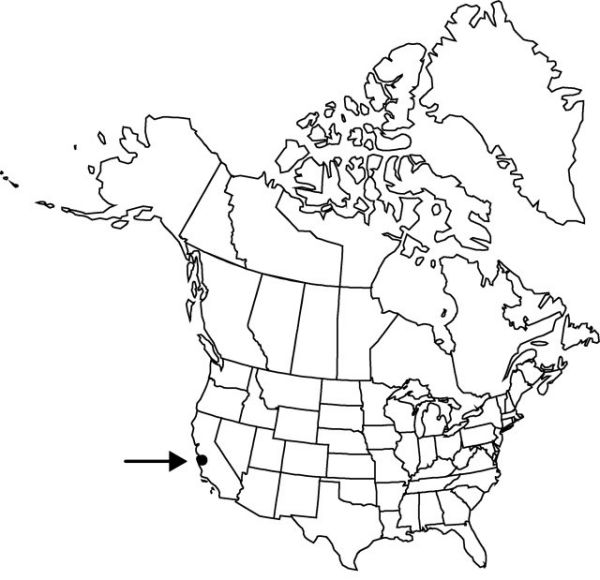Piperia yadonii
Lindleyana 5: 209, figs. 1A–G, 2. 1990.
Plants 10–50(–80) cm. Stems attenuate toward tuberoid, 0.5–3.5 mm diam.; bracts (4–)7–20(–26). Leaves prostrate; blade 11–17 × 2.2–3.9 cm. Inflorescences densely flowered, cylindric, (2–)5–15(–30) cm; rachis shorter than peduncle; bracts (3–)5–8(–11) mm. Flowers green and white, fragrance faint, harsh to honeylike, diurnal; sepals 3–5.5 × 1–2.5 mm; dorsal sepal green with white margins, elliptic-lanceolate; lateral sepals spreading to recurved, white, lanceolate; petals erect-recurved, green with broad outer, narrow inner white borders, lanceolate, falcate, 3–5 × 1.5 mm, inner margins often forming U, apices often connivent; lip recurved, triangular-lanceolate, 2.5–5 × 1.2–2.5 mm; spur deflexed, 2–5 mm; viscidia ovate to broadly elliptic, 0.4–0.5 × 0.3–0.4 mm; rostellum blunt. Capsules 5–9 mm. Seeds cinnamon brown.
Phenology: Flowering late May–early Aug.
Habitat: Monterey pine forest, maritime chaparral
Elevation: 0–150 m
Discussion
Of conservation concern.
Piperia yadonii, a narrow endemic (Monterey Bay area), bears a superficial resemblance to P. elegans. Much of the P. yadonii habitat has been preempted for residential and golf course development.
Selected References
None.
